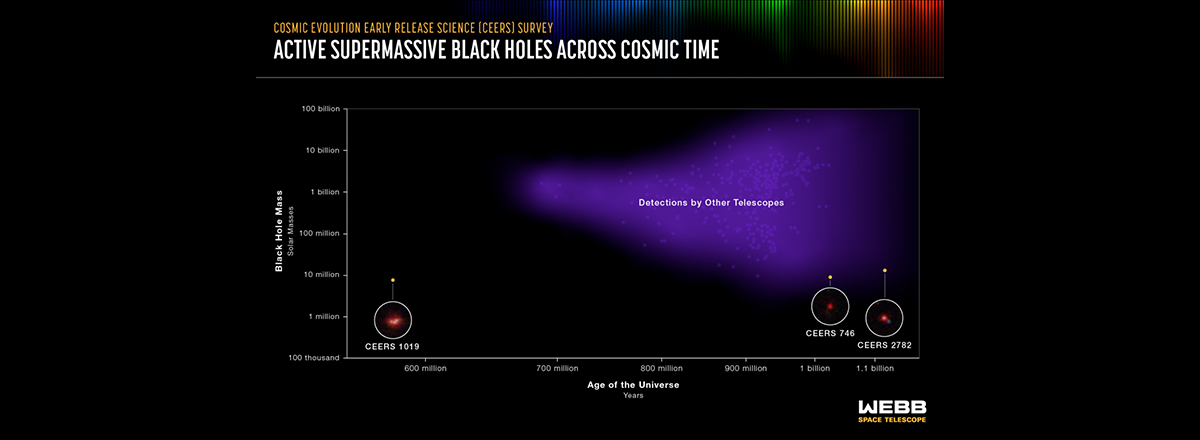Astronomers Detect the Most Distant Active Supermassive Black Hole
The JWST's data on CEERS 1019 and two other "lightweight" black holes, CEERS 2782 and CEERS 746, could revolutionize our understanding of cosmic history, revealing insights into how stars and galaxies formed and evolved.

The James Webb Space Telescope (JWST) has made an astonishing discovery, detecting the most distant active supermassive black hole ever seen. Named CEERS 1019, the galaxy housing this ancient black hole emerged just 570 million years after the Big Bang. What makes this discovery even more remarkable is the black hole's relatively small size, weighing in at just 9 million solar masses, unlike most supermassive black holes in the early universe that exceed 1 billion solar masses.
This finding poses a significant challenge to current theories about the formation of black holes in the early universe. According to the Space Telescope Science Institute, managing JWST's science operations, it is still difficult to explain how this black hole formed so soon after the universe's birth. While astronomers have long suspected the existence of lower-mass black holes in the early universe, this observation provides the first detailed evidence of their presence.
The JWST's data on CEERS 1019 and two other "lightweight" black holes, CEERS 2782 and CEERS 746, could revolutionize our understanding of cosmic history, revealing insights into how stars and galaxies formed and evolved.

